The Complete Guide to TPO Roofing: Benefits, Costs, and Considerations
June , 2024 | 9 min. read
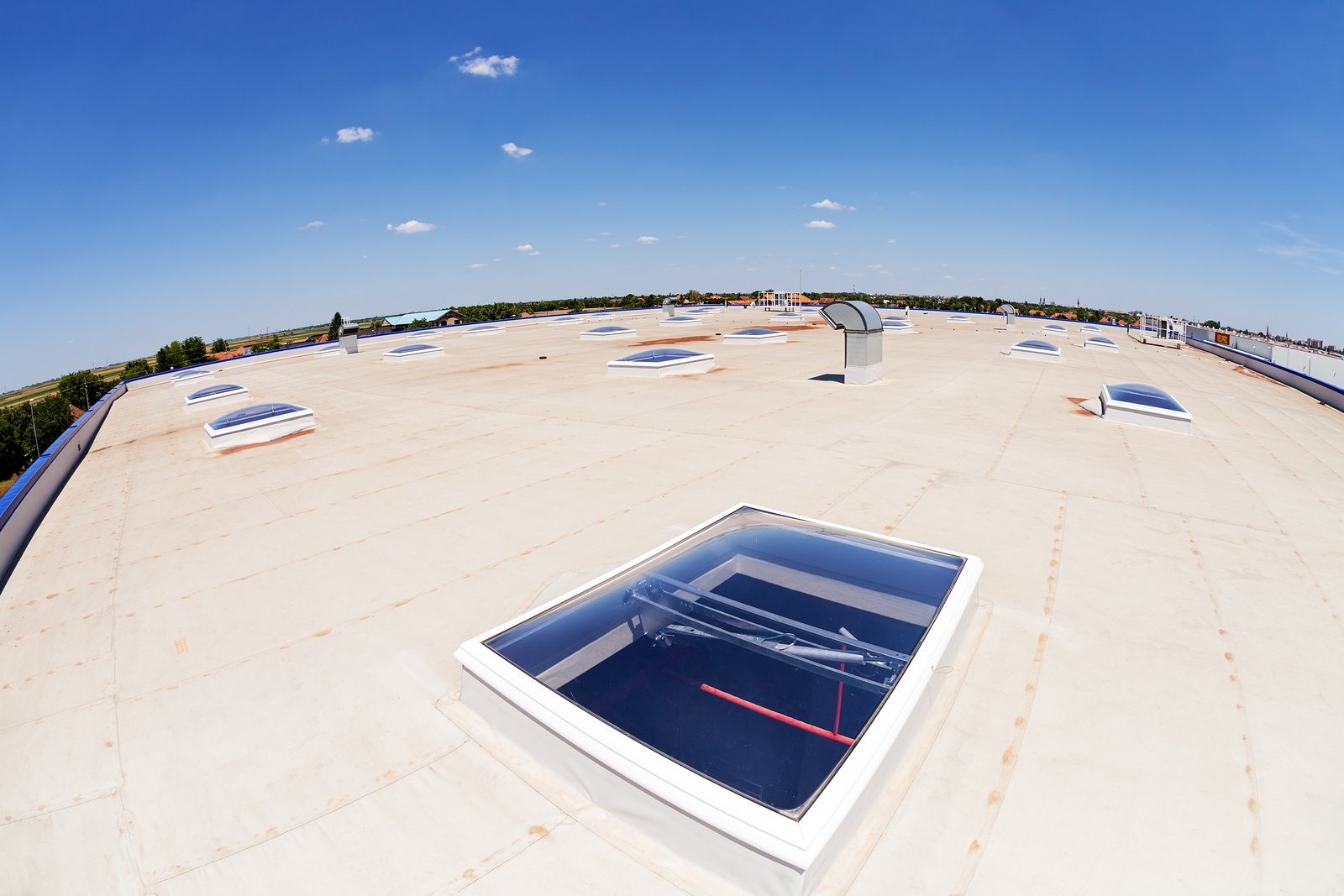
Do you need a flat roof replacement and are unsure about which material to choose?
Are you feeling overwhelmed by all the flat roofing options available?
With so many options, it's easy to get bogged down with information overload. Don't worry, we've got you covered! Our team at RoofCrafters has been helping clients make well-informed decisions about flat roofs for 30 years.
We understand that replacing a flat roof can be a big investment, and the last thing you want is to feel uncertain about your decision. That's why we're here to share all the important information about TPO roofing and make sure you're fully equipped to make a confident choice.
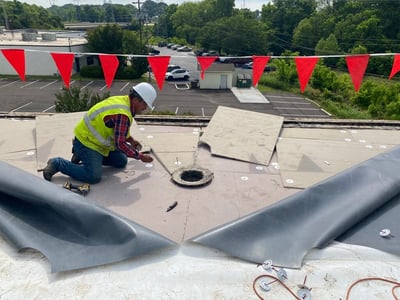
We promise by the end of this article, you'll know everything there is to know about TPO roofs, including:
- What a TPO roof is
- The benefits of a TPO roof
- The disadvantages of a TPO roof
- What factors impact the cost of a TPO roof
- How much a TPO roof cost
So, sit back, relax, and let's get started on this TPO roofing journey.
Understanding TPO Roofing: Composition and Uses
TPO stands for thermoplastic olefin. It is a type of roofing material that is made from synthetic rubber. TPO roofing is a popular choice for flat or low-sloped roofs, such as those found on commercial buildings. The benefits of TPO are its durability, ease of installation, and energy efficiency.
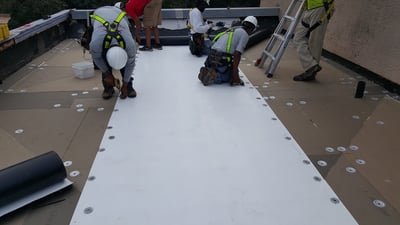
TPO roofing is also resistant to UV radiation and can reflect solar heat, which can help to reduce energy costs. TPO roofing is available in a range of colors. White TPO will help to reduce heat absorption and reflect sunlight the best.
Key Benefits of TPO Roofing: Durability, Efficiency, and More

There are several benefits to using TPO roofing. Below are the top 7 reasons we believe choosing TPO for your flat roofing needs will help you:
- Durability: TPO roofing is known for being very durable and can last for many years with proper maintenance.
- Energy efficiency: TPO roofing is reflective. Which can help to reduce energy costs by reflecting sunlight and reducing heat absorption.
- Easy to install: TPO roofing is easy to install, which can help to reduce labor costs.
- Environmentally friendly: TPO roofing is made from synthetic rubber, which is a renewable resource. It is also fully recyclable, which can help to reduce waste.
- Weather resistant: TPO roofing is resistant to UV radiation. It can withstand extreme temperatures, making it suitable for use in a wide range of climates.
- Flexibility: TPO roofing is flexible. It can expand and contract with temperature changes, which can help to prevent cracking and other damage.
- Aesthetically pleasing: TPO roofing is available in a range of colors, which can help to enhance the appearance of a building.
Potential Drawbacks of TPO Roofing: What to Consider
Like any roofing material, TPO roofing has its own set of disadvantages. We would always have you consider the disadvantages before making your final roofing consideration.
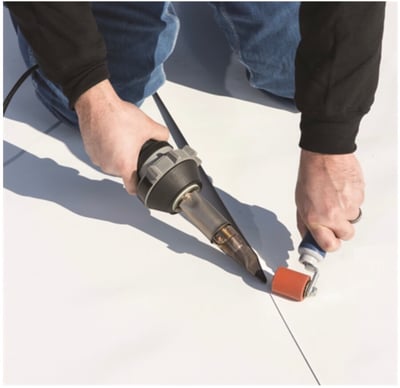
Here are the disadvantages:
- Expense: TPO roofing can be more expensive than some other types of roofing materials, such as asphalt shingles.
- Limited lifespan: While TPO roofing is known for being durable, it has a limited lifespan. Compared to other roofing materials, such as metal or slate.
- Vulnerability to punctures: TPO roofing can be punctured more easily than some other roofing materials, such as metal or slate.
- Susceptibility to UV degradation: TPO roofing is resistant to UV radiation, but it can still be prone to degradation over time. This can lead to the need for repairs or replacements.
- Compatibility issues: TPO roofing is not compatible with other roofing systems, and it may not be suitable for use on steep sloped roofs.
Factors Affecting TPO Roofing Costs
Several factors can impact the cost of a TPO roof system. The biggest factor other than the size of your roof will be the type of installation method. The two main installation methods for TPO roof systems are: fully adhering or mechanically attaching.
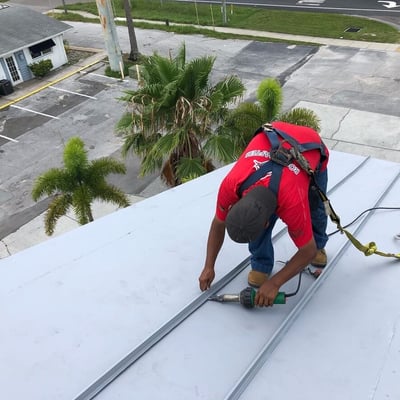
Here is a list of the other things that will impact the cost:
- Size of the roof: The larger the roof, the more material, and labor will be required, which can increase the cost.
- The complexity of the roof: The complexity of the roof, such as the presence of multiple levels or penetrations, can increase the cost of installing a TPO roof.
- Condition of the roof deck: If the roof deck is in poor condition, it may need to be repaired or replaced. Before installing the TPO roof, which can increase the cost.
- Accessibility: If the roof is difficult to access, it may require additional equipment or labor, which can increase the cost.
- Local labor costs: The cost of labor can vary depending on location. In areas with higher labor costs, the overall cost of a TPO roof may be higher.
- Material cost: The cost of the TPO material itself will also impact the overall cost of the roof.
- Additional features: If the TPO roof includes additional features, such as insulation or through wall scuppers and roof drains it will likely cost more than a basic TPO roof.
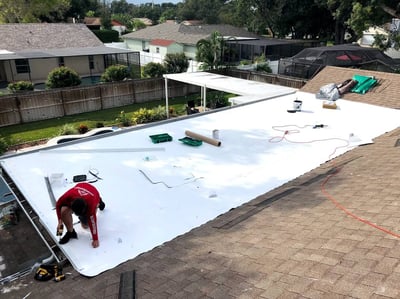
TPO Roofing Cost: What to Expect
TPO roof costs can vary widely depending on the factors we mentioned earlier. Such as the size of the roof, the complexity of the roof, the condition of the roof deck, and the cost of labor. On average, you can expect to pay between $7 and $12 per square foot for a TPO roof. However, it is important to get a quote from a local contractor to get a more accurate price for your project.
Keep in mind that the cost of a TPO roof will also vary depending on the thickness and quality of the material. As well as the type of insulation you desire for your roof system.
Is TPO Roofing the Best Choice for Your Flat Roof?
Ready to make the big decision about your flat roof?
It's like choosing your life partner, except this one doesn't have to put up with your "dad" jokes.
Don't worry, we'll help you weigh the pros and cons, just like you would with a potential spouse. So, let's see if a TPO roof is the one for you!
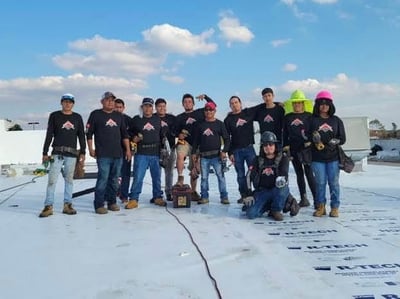
There are several things to consider when deciding if a TPO roof is right for you:
- The slope of your roof: TPO roofing is typically used on flat or low-sloped roofs. If your roof has a steep slope, TPO may not be the best choice.
- Your budget: As I mentioned earlier, TPO roofing can be more expensive than some other types of roofing materials. If you are on a tight budget, you may want to consider other options.
- The climate in your area: TPO roofing is resistant to UV radiation and extreme temperatures, making it suitable for use in a wide range of climates. However, it may not be the best choice in areas with extremely cold temperatures or high levels of UV radiation.
- The appearance of your building: TPO roofing is available in a range of colors, which can help to enhance the appearance of a building. If you are looking to update the look of your building, TPO may be a good choice.
- The durability of your roof: TPO roofing is known for being durable, but it has a limited lifespan compared to some other roofing materials. If you are looking for a roof that will last for many years with minimal maintenance, you may want to consider other options.
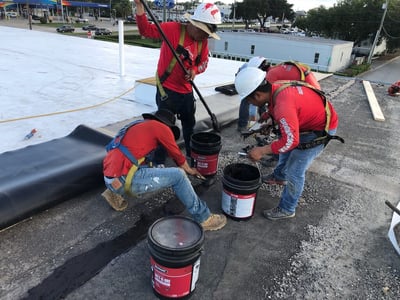
Ultimately, the best roofing material for you will depend on your specific needs and circumstances. It’s important to consider all of the factors I mentioned. And best to consult with a local contractor experienced in TPO roofs.
Finding the Right TPO Roofing Contractor for Your Project
Finding a locally experienced TPO contractor is one of if not the most important parts of having your project end successfully. Not all roofing contractors are certified to install TPO. Hiring a roofing company that is certified by the manufacturers is key to getting a long-lasting roof.

Our family at RoofCrafters has been installing TPO since the late 1990s. With thousands of 5-star reviews and satisfied clients. We can assure you that you'll get a great job and a long-lasting manufacturer-backed warranty. Get started today.
At RoofCrafters, our mission is to provide job opportunities for others to thrive and grow while making a meaningful impact within our communities.




